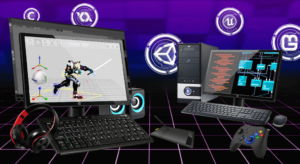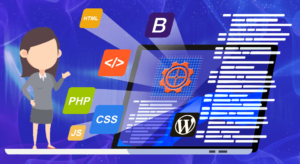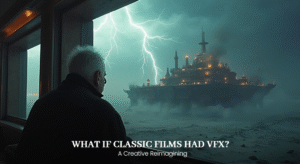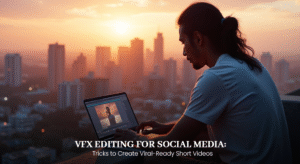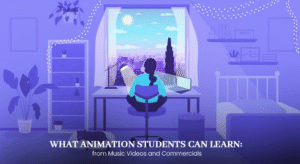
The Future of Animation: Emerging Technologies and Trends
Animation has come a long way since the days of hand-drawn frames. With the rapid advancements in technology, the future of animation holds immense potential for creativity, innovation, and immersive storytelling. In this blog, we will dive into the exciting world of animation and explore the emerging technologies and trends that are shaping its future. From virtual reality and artificial intelligence to real-time rendering and interactive experiences, let’s embark on a journey to discover what lies ahead for the captivating realm of animation.
Virtual Reality (VR) and Animation
The animation sector now has new opportunities thanks to virtual reality. Users of VR technology can fully immerse themselves in virtual worlds and engage with animated objects and characters in ways they have never done before. A captivating and interactive narrative medium is produced by the combination of animation and virtual reality. It provides chances for animated storytelling that can be investigated and personally experienced, bringing a sense of presence and participation unlike anything else.
Imagine stepping into a virtual world where you can walk alongside animated characters, participate in their adventures, and shape the outcome of the story. VR animation has the potential to redefine how we consume and engage with animated content, blurring the boundaries between traditional storytelling and interactive experiences.
Artificial Intelligence (AI) and Animation
Animation is one of many sectors being transformed by artificial intelligence. The animation process is evolving thanks to AI-powered tools and algorithms, becoming more effective, realistic, and widely available. The use of machine learning algorithms to create lifelike movements and behaviors for animated creatures is an intriguing application of AI in animation. Traditionally, animators had to painstakingly create every frame of an animation by hand. With AI, animators can now train models using vast amounts of motion capture data and let the algorithms generate natural and realistic movements automatically. This not only saves time and effort but also opens up possibilities for creating diverse and believable characters with unique personalities.
Moreover, AI can assist in automating repetitive tasks in the animation pipeline, such as lip-syncing, background generation, and character rigging. By leveraging AI technologies, animators can focus more on the creative aspects of their work, pushing the boundaries of visual storytelling and animation techniques.
Real-Time Rendering and Interactive Experiences
The animation industry is transforming thanks to real-time rendering technology, which makes interactive experiences and immersive storytelling possible in a fluid and responsive environment. An animation sequence’s rendering used to take a lot of time and computing power. However, animators may see immediate feedback and make changes on the spot thanks to real-time rendering technologies. Real-time rendering not only increases production efficiency but also creates new opportunities for interactive storytelling. Imagine viewing a cartoon movie or television show where the viewer can affect the plot or engage with the characters in real-time. The distinction between viewers and participants is blurred by this degree of interaction, resulting in a more interesting and unique animation experience.
Furthermore, augmented reality (AR) and mixed reality (MR) experiences are being developed as a result of real-time rendering technologies. By superimposing virtual components over the real world, augmented reality (AR) enables immersive and participatory storytelling in regular settings. Users of MR can interact with virtual items while remaining conscious of their physical environment. MR includes features of both VR and AR. These new technologies can produce animated experiences that are both fascinating and transformative.
Non-Linear and Interactive Narratives
The art of telling stories through animation is constantly evolving. Interactive and non-linear storylines are becoming more common because they let the audience influence the plot’s development and resolution. The audience will have a more interesting and interactive experience because of this deviation from standard linear storytelling. The ability to choose alternative perspectives or paths inside the story in non-linear narratives gives the audience a sense of agency and immersion. By enabling viewers to engage with characters and shape the plot, interactive storytelling goes a step further. These cutting-edge storytelling techniques put animators and storytellers under pressure to create engrossing narrative frameworks that take into account various options and paths while preserving coherence and emotional effect.
Cross-Media Integration
Traditional media like films and television are no longer the only places where animation can be found. Its influence has been extended to video games, virtual reality applications, mobile platforms, and even social media sites. Cross-media integration opens up new possibilities for audience involvement and enables seamless storytelling across several platforms. For instance, animated characters from a movie can be made to come to life in a video game, allowing players to learn more about the plot and interact with the environment. As an example, short-form animations for social media or bite-sized experiences for mobile devices are two ways that animated material can be customized for a certain platform. Animation is being incorporated into a variety of media, allowing creators to reach a larger audience and giving viewers more ways to interact with their favorite animated works.
Animation’s future is teeming with promising possibilities. The animation scene is changing as a result of new technologies including virtual reality, artificial intelligence, real-time rendering, non-linear storylines, and cross-media integration. Animators and storytellers now have a unique set of tools at their disposal to produce engrossing and engaging experiences as technology advances.
The future of animation provides unlimited promise for pushing the limits of creativity, engagement, and storytelling, whether it be through entering a virtual environment, interacting with AI-generated characters, or taking part in non-linear narratives. We can anticipate that animation will keep capturing our imaginations and bringing tales to life in ways we never imagined imaginable as audiences embrace these cutting-edge technologies and trends. So buckle up and prepare for an exciting ride into the animation of the future, where creativity and invention have no limits.



